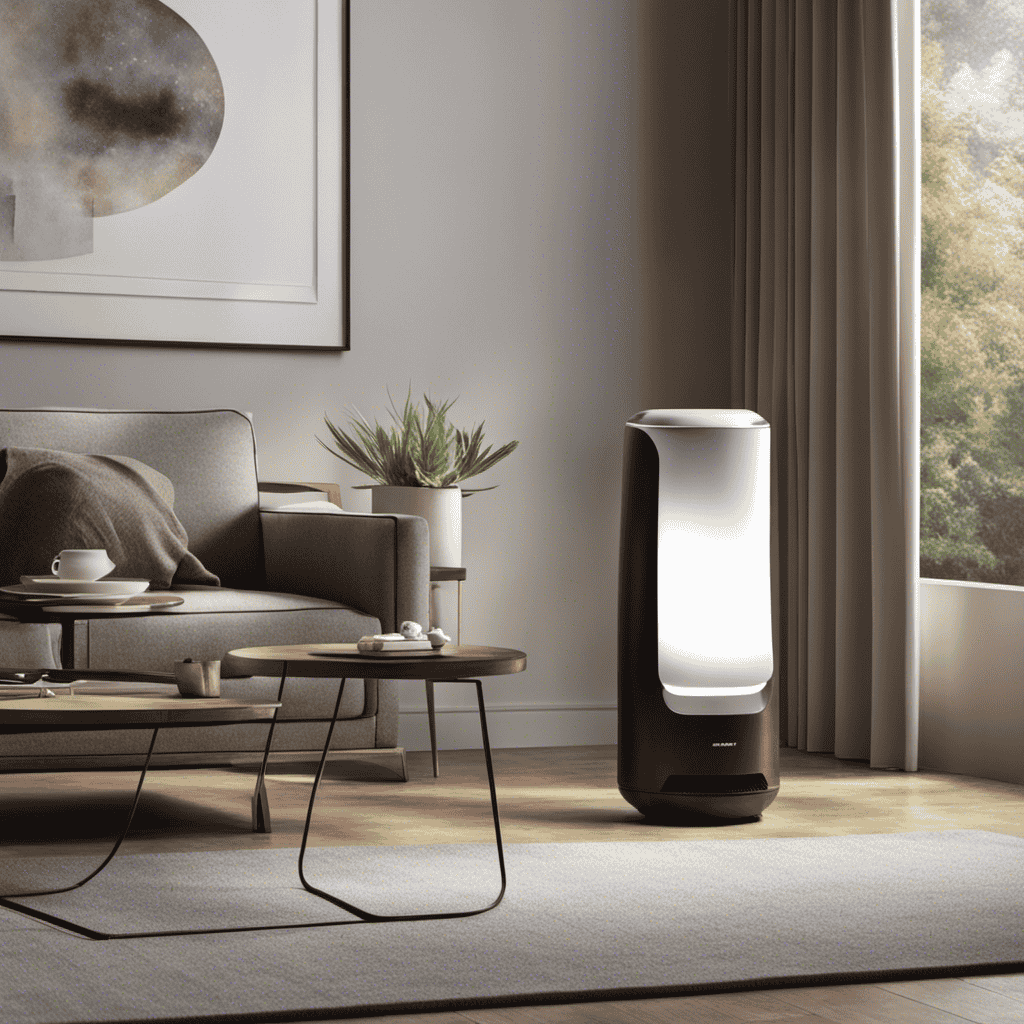Nano-fiber filters use ultra-thin fibers less than a micrometer in diameter, creating a dense network that captures tiny particles more effectively. By enhancing surface area and fiber design, these filters improve air and water purification, industrial processes, and personal protection. They’re lightweight, flexible, and can be customized for specific needs. If you want to discover how these tiny threads deliver such powerful results, keep exploring the innovative world of nano-fiber technology.
Key Takeaways
- Nano-fiber filters consist of ultra-thin fibers that capture tiny particles with high efficiency.
- They are produced mainly through electrospinning, allowing precise control over fiber properties.
- Incorporating nanomaterials enhances filter strength, antimicrobial features, and water-repellent surfaces.
- These filters are used in air purification, water treatment, and personal protective equipment.
- Advancements in manufacturing and materials continue to expand their effectiveness and application potential.

Nano-fiber filters are advanced materials designed to trap tiny particles more effectively than traditional filters. Their secret lies in the incredibly small diameter of their fibers, often less than a micrometer, which provides a vastly increased surface area and creates a dense network that captures even the most minuscule pollutants. When you use these filters, you’re leveraging cutting-edge technology that enhances air quality, water purification, and industrial filtration processes. The key to their effectiveness is rooted in innovative manufacturing techniques, primarily electrospinning, which allows for precise control over fiber diameter and distribution. With electrospinning techniques, you can produce uniform nano-scale fibers rapidly and consistently, giving you the ability to customize filters for specific applications. This method involves applying a high-voltage electric field to a polymer solution, stretching it into ultra-fine fibers that are collected on a grounded surface. The process is versatile and adaptable, enabling the development of a wide range of fiber material innovations, from biodegradable polymers to advanced composites. These innovations allow you to tailor the properties of the fibers, such as flexibility, strength, and chemical resistance, to suit different filtration needs. For example, incorporating nanomaterials like carbon nanotubes or metal oxides into the fiber matrix can enhance antimicrobial properties or improve filtration efficiency against specific pollutants. As you explore fiber material innovations, you’ll notice that the ability to engineer fibers at the nanoscale opens up new possibilities for high-performance filters. These materials can be designed to have superhydrophobic surfaces, making them ideal for water filtration by preventing fouling or clogging. Additionally, lightweight and flexible nano-fiber filters can be integrated into portable devices or face masks, providing you with personal protection that doesn’t compromise comfort. Advances in manufacturing techniques enable the production of more complex and functional fiber architectures, further expanding their potential uses. The manufacturing process’s precision and the variety of fiber materials available mean that nano-fiber filters can be optimized for a broad spectrum of uses, from industrial air scrubbers to medical masks. The result is a highly effective filtration system that combines durability, efficiency, and adaptability, making it a powerful tool for improving health and safety standards. When you choose nano-fiber filters, you’re adopting a technology that’s continuously evolving thanks to ongoing fiber material innovations and advanced electrospinning techniques, promising even better performance in the future. These tiny threads truly deliver huge results, transforming how we approach filtration challenges across multiple industries.
Frequently Asked Questions
How Long Do Nano-Fiber Filters Typically Last Before Replacement?
You might wonder about the filter lifespan and how often you need to replace nano-fiber filters. Typically, these filters last between 3 to 6 months, depending on usage and air quality. Regular replacement guarantees maximum performance and clean air. To maintain the filters’ effectiveness, check the manufacturer’s guidelines and replace them when they become visibly dirty or if airflow decreases. This way, you keep your environment healthy and your system running smoothly.
Are Nano-Fiber Filters Environmentally Sustainable and Recyclable?
You might wonder if nano-fiber filters are environmentally sustainable and recyclable. While some models use biodegradable materials, many aren’t fully recyclable due to complex manufacturing. Recycling processes can be challenging, but advancements are underway to improve eco-friendliness. Choosing filters made from biodegradable materials helps reduce waste, and supporting innovations in recycling processes can make nano-fiber filters more sustainable, benefiting both the environment and future use.
Can Nano-Fiber Filters Block Viruses and Bacteria Effectively?
Think of nano-fiber filters as a fortress for your health. They excel at virus filtration and serve as strong bacterial barriers, preventing tiny pathogens from slipping through. These filters trap viruses and bacteria with incredible precision, making them highly effective for safeguarding air and water. You can trust their tiny threads to act as vigilant guardians, keeping you safe from harmful microbes and providing peace of mind in everyday life.
What Are the Manufacturing Costs Associated With Nano-Fiber Filters?
You should consider that the manufacturing costs of nano-fiber filters involve a detailed cost analysis of materials and production processes. Production challenges, like achieving uniform fiber size and scalability, can increase expenses. These factors contribute to higher initial investments, but advancements are gradually reducing costs. Overall, while manufacturing nano-fiber filters can be costly, ongoing innovations aim to make production more affordable and efficient.
How Do Nano-Fiber Filters Compare to Traditional Filters in Energy Efficiency?
You’ll find nano-fiber filters are more energy-efficient than traditional filters, thanks to their high surface area and fine threads that capture particles effectively. Their aesthetic appeal is sleek and modern, but installation challenges can arise due to their delicate structure. Despite this, their improved filtration reduces airflow resistance, lowering energy consumption. Overall, they offer a smarter, more efficient choice, though you need to contemplate installation and maintenance carefully.
Conclusion
As you consider the power of nano-fiber filters, one thing becomes clear: their tiny threads hold immense potential. But what if the true impact is just beginning? Could these microscopic marvels revolutionize clean air and water worldwide? The future depends on what you do next—will you embrace this tiny technology with huge possibilities? The answer might just change everything you thought you knew about filtration forever. The next big breakthrough is waiting just around the corner.










